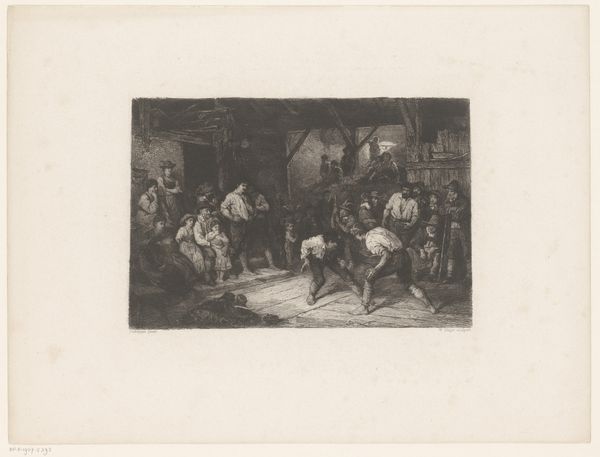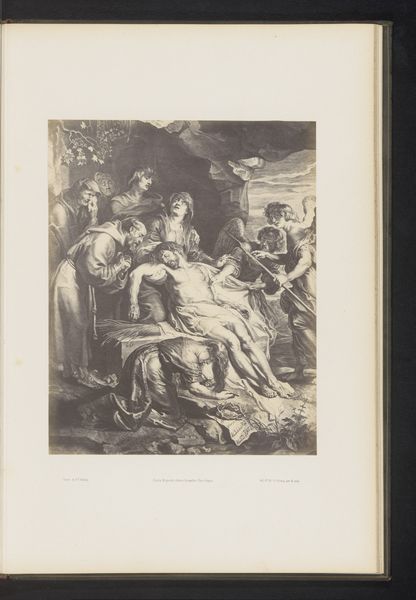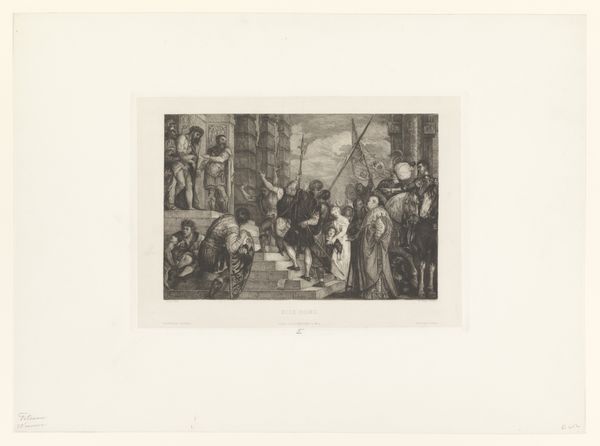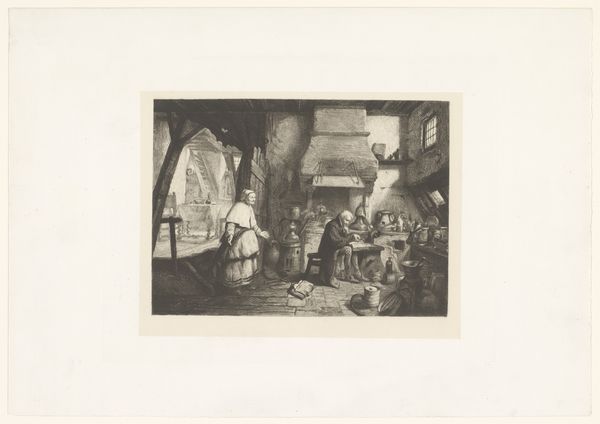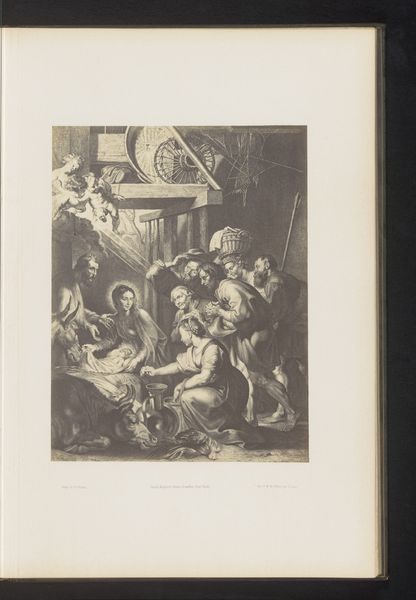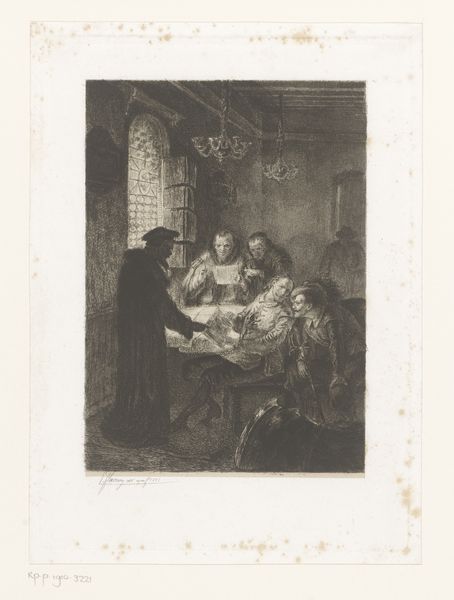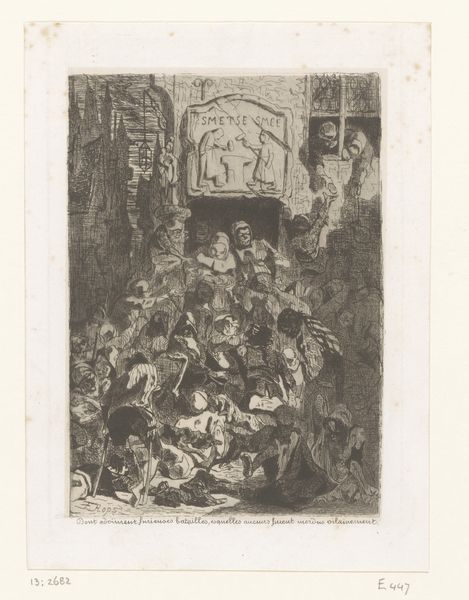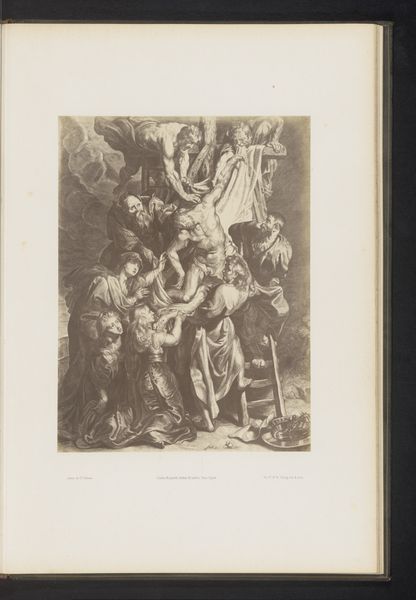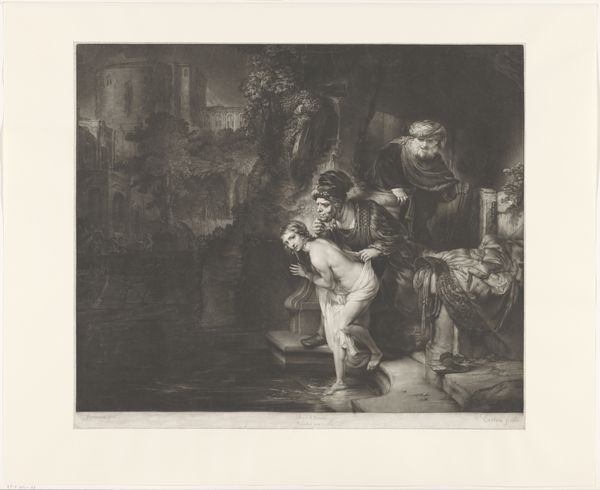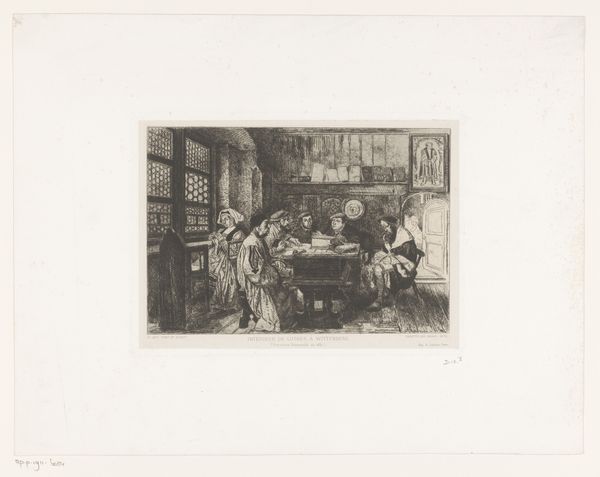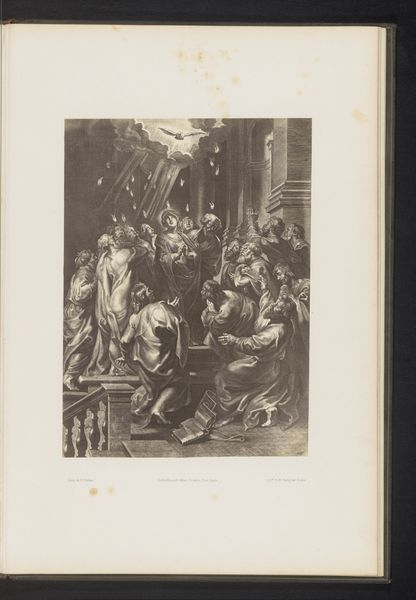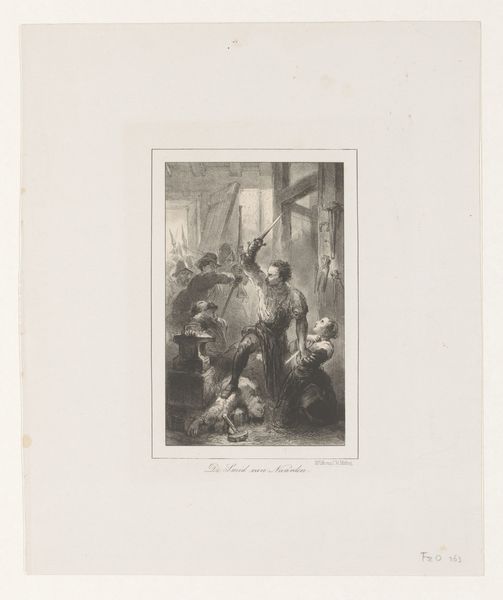
print, etching
#
narrative-art
# print
#
etching
#
old engraving style
#
genre-painting
#
realism
#
monochrome
Dimensions: height 312 mm, width 391 mm
Copyright: Rijks Museum: Open Domain
Curator: Ah, welcome. Today, we're looking at "Driekoningenfeest," or "Twelfth Night Feast" by Clèment Benoit, etched in 1894. It’s a monochrome print, filled with captivating detail. Editor: What a wild scene! My first thought is that it feels so... chaotic. Like stumbling into a very rowdy party in a smoky tavern. The light and shadow add to that slightly uneasy feeling. Curator: Indeed. Benoit's etching skillfully uses shadow to define the setting and figures. Observe the process of printmaking; etching allows for a wide range of tones through controlled acid corrosion of the metal plate. Note the labor required and the availability of such prints making art accessible for more folk. Editor: Absolutely, the tonal range is impressive! It's as if he’s pulling us into this revelry. I can almost smell the ale and feel the jostling. The composition directs the eye towards that figure in the crown perched precariously on a barrel! He's so obviously not as royal as he thinks he is! Curator: Precisely! This highlights a critique of social hierarchy. Look closely; this is genre painting documenting a tradition amongst the working class. These Twelfth Night celebrations were moments for subverting social norms, even for mocking royalty. The print serves as both record and commentary. Editor: There's also a hint of something darker in this festivity. The skull being held aloft in the background gives it an underlying sense of mortality. A bit like remembering 'memento mori' at a bash. I wonder what that skull signified to Benoit? Was it just a detail, or was he commenting on the fleeting nature of celebration? Curator: Excellent question! The skull might serve multiple purposes. Firstly, consider its literal placement: suggesting reflection amid consumption. Secondly, the very medium invites introspection about access to, and reproduction of, symbolic meaning through affordable imagery in printmaking traditions Editor: What gets me, beyond the artistry, is the immediacy. Despite being over a century old, it feels remarkably alive. You almost expect one of the figures to turn and acknowledge your presence! Like being granted entry to a raucous world. Curator: It really exemplifies the enduring power of the intersection between tradition and artistic practice doesn't it? We appreciate that even as production, circulation, and consumption habits change, cultural practices captured in artworks continue stimulating fresh perspectives about both materiality and memory today. Editor: That's such a fitting final point. It goes to show you can almost always unearth a treasure that makes you feel something new, even when you least anticipate it!
Comments
No comments
Be the first to comment and join the conversation on the ultimate creative platform.
